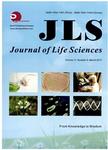Pros and Cons in Therapeutic Evaluation of Paraoxonase 1 in Nerve Agent Toxicity
Pros and Cons in Therapeutic Evaluation of Paraoxonase 1 in Nerve Agent Toxicity作者机构:Blast-Induced Neurotrauma Branch Center for Military Psychiatry and Neuroscience Walter Reed Army Institute of ResearchSilver Spring MD 20910 USA Analytical Toxicology Division US Army Medical Research Institute of Chemical Defense Aberdeen Proving Ground MD21010 USA
出 版 物:《Journal of Life Sciences》 (生命科学(英文版))
年 卷 期:2013年第7卷第9期
页 面:935-940页
学科分类:0710[理学-生物学] 071010[理学-生物化学与分子生物学] 081704[工学-应用化学] 07[理学] 08[工学] 0817[工学-化学工程与技术] 0826[工学-兵器科学与技术]
主 题:Paraoxonase 1 catalytic bioscavenger chemical warfare nerve agents pharmacokinetics protective efficacy
摘 要:PON 1 (Paraoxonase 1) has been proposed as an efficient catalytic bioscavenger to combat against OP (organophosphate) and CWNA (chemical warfare nerve agent) toxicity. Unlike stoichiometric bioscavengers such as butyrylcholinesterase, catalytic bioscavengers are cost effective with the advantage of eliminating all the OPs/CWNAs at low doses. Analysis of catalytic bioscavenger efficacy of PONI showed promising results by various group of researchers. Still, there are large numbers of grey areas which are not addressed so far. One of the major areas of interest is the pharmacokinetic analysis of infused PON 1 in multiple animal models. It is shown that previous studies in mice significantly increased half-life of PONI, while recent studies in guinea pigs from our group showed reduced half-life of PON1. Similar results were reported by other research groups in guinea pigs and non-human primates. The short half-life of exogenously administered PON1 in multiple animal models may be due to poor association of PON1 with its endogenous carrier, high density lipoprotein or lower doses of PON 1 or a reflection of species difference. These observations warrant the significance of thorough pharmacokinetic analysis of infused PON 1 and the development of alternative approaches for successful utility of PON 1 as an efficient medical countermeasure against OP/CWNA toxicity.



